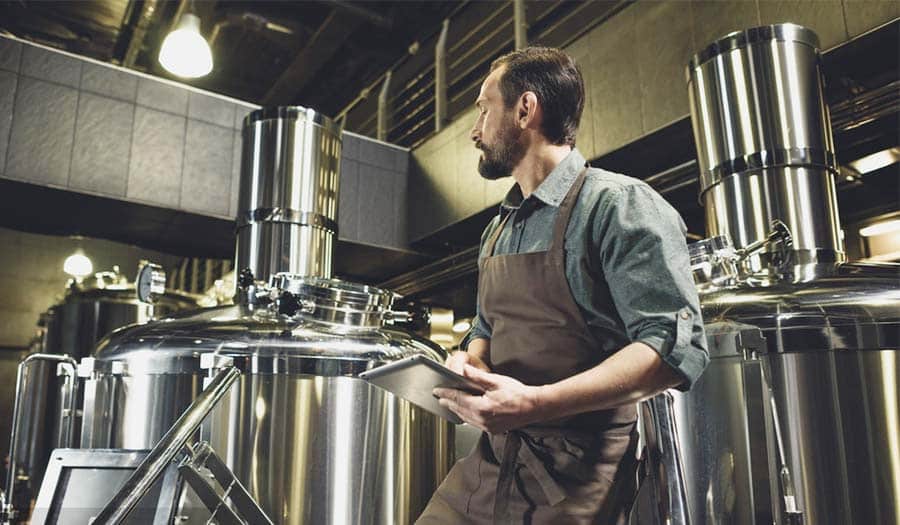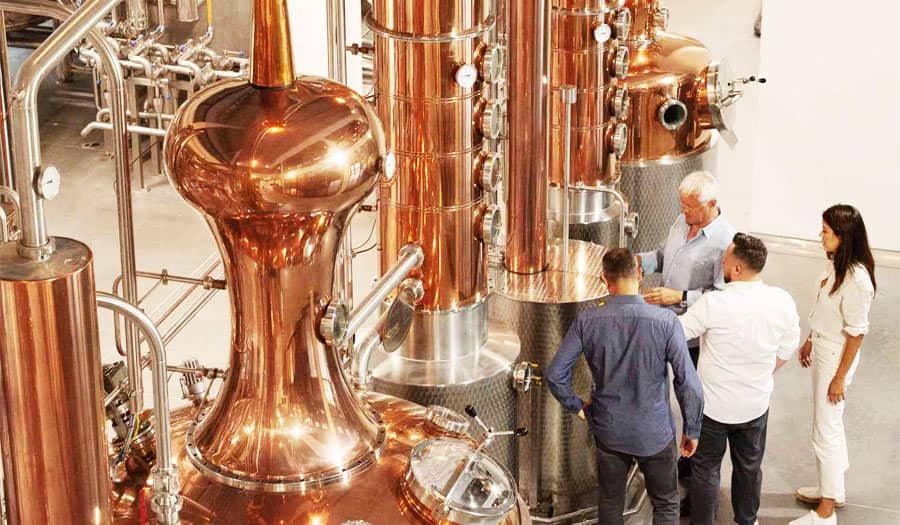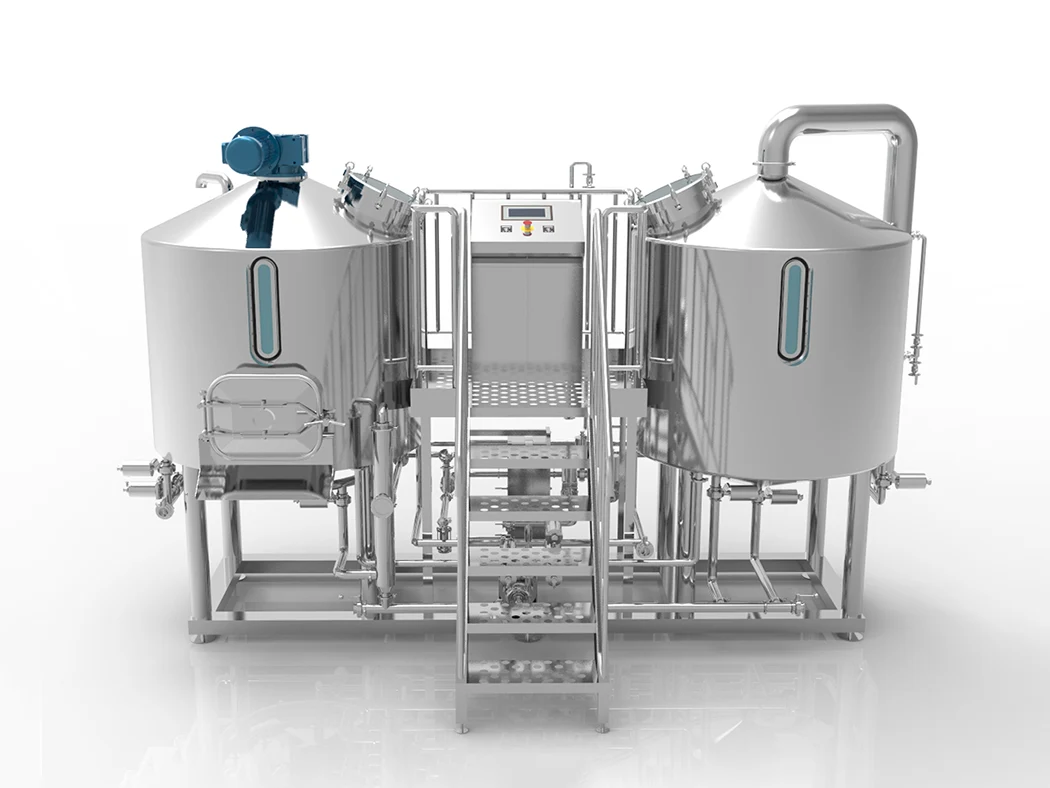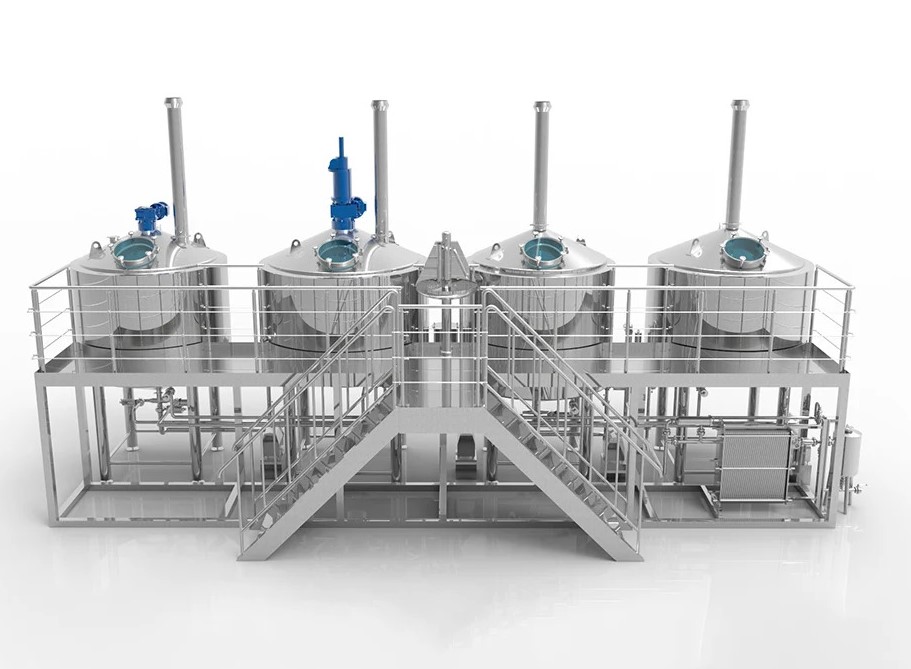The Problem: Brewing Without the Right Equipment
Starting a brewery is hard. Many new brewers feel lost when picking machines. The market has too many choices. Prices keep going up. The cost to start is now $1.2 million on average.
Craft brewers face big problems:
- Old machines that break down
- High energy bills
- Long wait times for parts
- Too much waste
- Hard-to-clean tanks
A Colorado brewer told us: “We lost $30,000 last year just from equipment problems.”
The Growing Challenge
The brewing world is getting harder. Supply chain delays now mean waiting 6 months for new tanks. Steel prices went up 6.7% this year.
Think about this:
- 68% of brewers can’t find good technicians
- Certification costs are up 22%
- Energy costs keep rising
One Michigan brewery shut down after just 8 months. Why? Their used equipment kept breaking. They couldn’t keep beer quality consistent.

The Solution: Modern Brewing Systems for Today’s Market
Smart brewers are finding better ways. New micro brewing equipment with modern features solves these problems.
Today’s best brew house systems combine:
- Energy-saving designs
- Smart controls
- Easier cleaning
- Consistent quality
Brewery Equipment Market Growth
| Year | Market Size (USD Billion) | Growth Rate | Key Trends |
|---|---|---|---|
| 2022 | 17.00 | – | Post-COVID recovery |
| 2024 | 17.4 | 6.01% | Microbrewery boom |
| 2025 | 18.6 | 8.76% | Smart automation |
| 2030 | 26.84 | 6.01% | Green brewing |
| 2033 | 28.5 | 5.21% | Nano brewery systems |
Market Growth Trajectory
Brewery Equipment Insights
- Automation Expansion: 42% of new brewery installations include IoT sensors [7](https://www.sitepoint.com/create-infographic-using-snap-svg/)
- Craft Beer Dominance: Craft brewery equipment segment shows fastest 37% YOY growth [6](https://medium.com/coding-artist/interactive-infographic-using-svg-vue-js-357a3fb69079)
- Microbrewery Boom: Microbrewery equipment demand up 300% since 2020 9
Core Brewery Machine Components
The Modern Brew House
The brew house is the heart of your brewery. It has these main parts:
- Mash tuns – Mix grain and hot water
- Lauter tuns – Separate sweet wort from grain
- Brew kettles – Boil wort with hops
- Whirlpool separators – Remove solids
- Heat exchangers – Cool wort fast
Best brew houses now use PLC automation to save time and make better beer. A good system has sight glasses to check progress and flow meters for perfect control.
“We upgraded from manual to automated brewing and saved 14 hours per week in labor.” – Arizona brewery owner
Fermentation Equipment
Fermentation tanks are where beer really happens. Modern tanks include:
- Cooling jackets with glycol systems
- Sample valves for testing
- Tri-clamp fittings for easy cleaning
- Temperature probes for perfect control
The best tanks are made with 304/316L stainless steel that meets strict food safety standards. Smart brewers also use unitanks that handle both fermentation and conditioning.
Bright Tanks and Conditioning
After fermentation, beer goes to bright beer tanks (BBTs). These tanks:
- Hold finished beer
- Add carbonation
- Keep beer cold and ready
Many brewers now use brite tanks with carbonation stones and pressure gauges to get perfect bubbles every time.
Packaging Systems
Your beer needs to reach customers. Modern bottling lines and canning systems have:
- Automatic keg washers
- Conveyor belts for smooth flow
- Fill level sensors
- Date coding systems
Small brewers love the new compact canning systems that take up less space but still can package 30+ cans per minute.
How to Choose the Right Brewery Equipment
Match Equipment to Your Output
First, know how much beer you will make:
| Brewery Type | Annual Output | Typical System Size |
|---|---|---|
| Nano | Under 1,000 bbls | 1-3 bbl system |
| Micro | 1,000-15,000 bbls | 7-15 bbl system |
| Regional | 15,000+ bbls | 30+ bbl system |
Nano brewery equipment has grown 300% since 2020. These small systems let new brewers start with less risk.
Automation Needs
Modern brewers must decide how much automation they need:
- Basic – Manual valves, simple controls
- Mid-level – Some automated steps, digital displays
- Full – PLC automation with touch screens and remote control
Good automation systems can track every step and save recipes for perfect beer every time.
Materials Matter
Always check what your equipment is made from:
- 304 stainless steel – Good for most beer types
- 316L stainless steel – Best for acidic or salty beers
- Sanitary welds – No places for bacteria to hide
Space Planning
Know your space limits before buying:
- Ceiling height (for tall fermentation tanks)
- Floor load limits (full tanks are heavy!)
- Door sizes (for bringing equipment in)
- Utility connections (steam, water, power)
Many new brewers work with experts who understand layout challenges. Getting this right can save money later.

New vs. Used Brewery Equipment
The Used Equipment Market
Used equipment costs 30-40% less than new machines. But be careful:
Benefits:
- Lower startup costs
- Faster delivery
- Often available locally
Risks:
- Hidden damage
- Hard-to-find parts
- Outdated technology
- No warranty
Always check used tanks for:
- Dents or scratches
- Quality of welds
- Working valves and fittings
- Clean surfaces inside
Smart Buying Options
Many brewers now choose custom solutions that mix new and used parts. Working with a company that offers both engineering and manufacturing helps avoid problems.
Some companies, like Micet, offer a 3-year warranty on tanks and 1-year on accessories, which reduces the risk of buying new equipment. Their global service centers provide fast help when needed.
Maintaining Your Brewery Equipment
Daily Cleaning
CIP systems (clean-in-place) are now standard in good breweries. These systems:
- Save time (4-5 hours per day)
- Use less water and chemicals
- Clean better than hand washing
- Reach all parts of tanks and pipes
A good CIP system uses spray balls and pumps to clean inside tanks without opening them.
Keeping Things Cold
Glycol systems keep beer at the right temperature. They need regular care:
- Check glycol reservoirs monthly
- Clean cooling jackets when needed
- Test glycol pumps for pressure
- Make sure temperature probes read correctly
Good cooling saves money. One brewer cut power bills by 17% with a modern system.
Fixing Problems Fast
Smart brewers keep these parts handy:
- Extra gaskets and O-rings
- Spare pressure gauges
- Backup pump parts
- Common fittings
Having a relationship with equipment makers who offer quick support prevents lost production time.

New Trends in Brewing Technology
Smart Brewing Systems
The newest brewing equipment now has:
- Cloud-connected controls
- Mobile alerts when fermentation changes
- Auto recipe adjustments
- Remote monitoring from your phone
These smart systems mean brewers can make better beer with less work.
Energy-Saving Designs
Modern brew systems use less power:
- Heat recovery (saves 15-20%)
- Better insulation
- Variable speed diaphragm pumps
- LED lighting
A brewery in Germany using AI controls saved 18% on energy costs while making more beer.
Space-Saving Options
New modular systems set up 55% faster than old designs. They also:
- Use less floor space
- Can be moved if needed
- Grow with your business
- Have built-in safety features
Buyer’s Checklist for Brewery Equipment
Before you buy, check these points:
- [ ] Equipment matches your volume needs
- [ ] Parts and service available nearby
- [ ] Meets safety standards (ASME/CE)
- [ ] Has proper warranties
- [ ] Includes installation help
- [ ] Works with your space and utilities
- [ ] Has room for you to grow
Finding the Right Partner
The best brewery equipment companies do more than sell machines. They help with:
- Brewery layout and design
- Recipe development
- Training your staff
- Ongoing support
- Future upgrades
Look for teams with real brewing experience who understand both the art and science of beer.
Companies like Micet stand out by offering full engineering services along with their equipment. Their team brings 22 years of process design experience to help brewers avoid costly mistakes.
Success Stories
Colorado Craft Brewery
A small brewery in Colorado switched to a modern system with heat jackets and smart controls. They now save $220,000 per year on energy while making better beer.
Urban Nano Brewery
A city nano brewery with limited space chose a compact system with conical bottoms on their tanks. This saved 30% on floor space while allowing them to make six different beers at once.
Farm Brewery Expansion
A growing farm brewery needed to triple production. They chose a flexible system with expandable fermentation tanks. Their transition happened without stopping production.
Conclusion
The brewery machine market is growing fast, expected to reach $28.5 billion by 2033. New brewers have more choices than ever, from basic small brewing equipment to full automated systems.
The key is finding equipment that:
- Matches your beer styles and volume
- Fits your space and budget
- Can grow with your business
- Comes with good support
By choosing the right machines and partners, you can avoid the common problems many brewers face. Modern equipment with proper warranties and expert support helps ensure your brewing success.
This guide used data from the Brewers Association, MarketsandMarkets, and Verified Market Research to give you the most current information on brewery machines.




